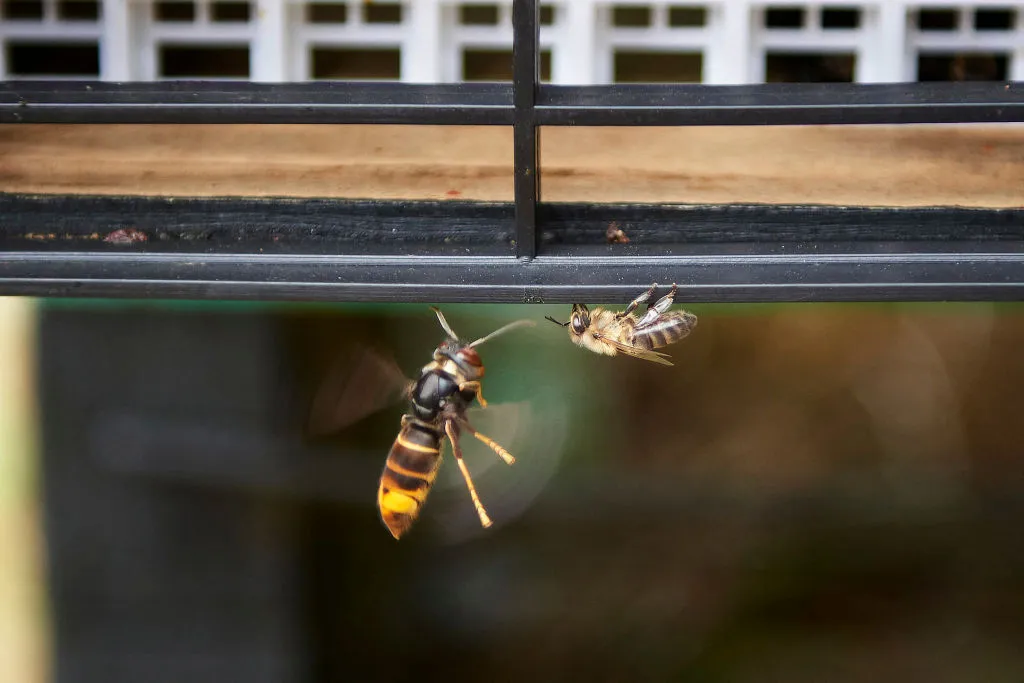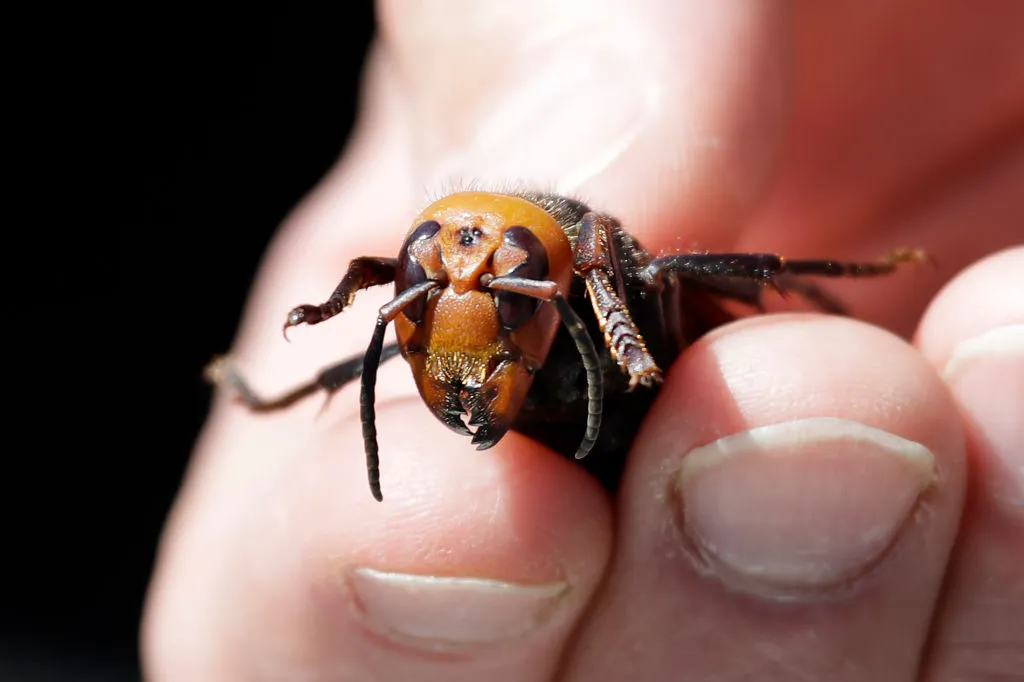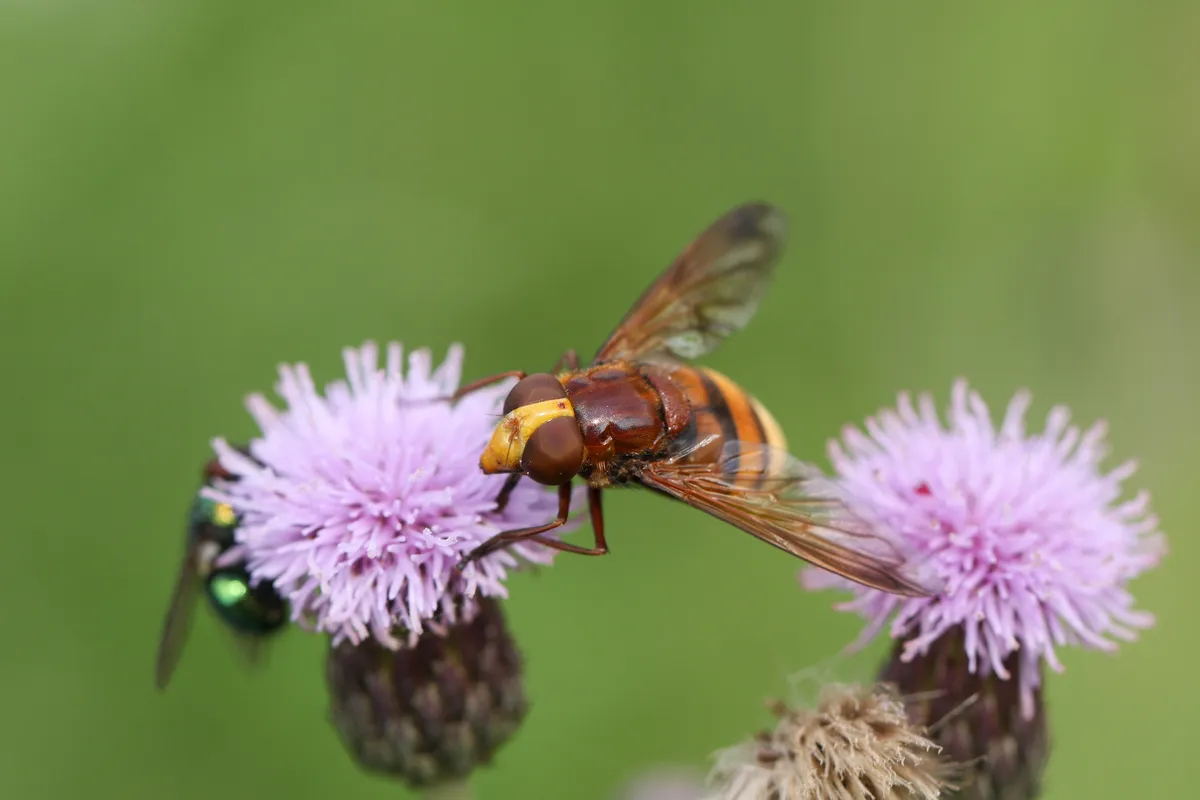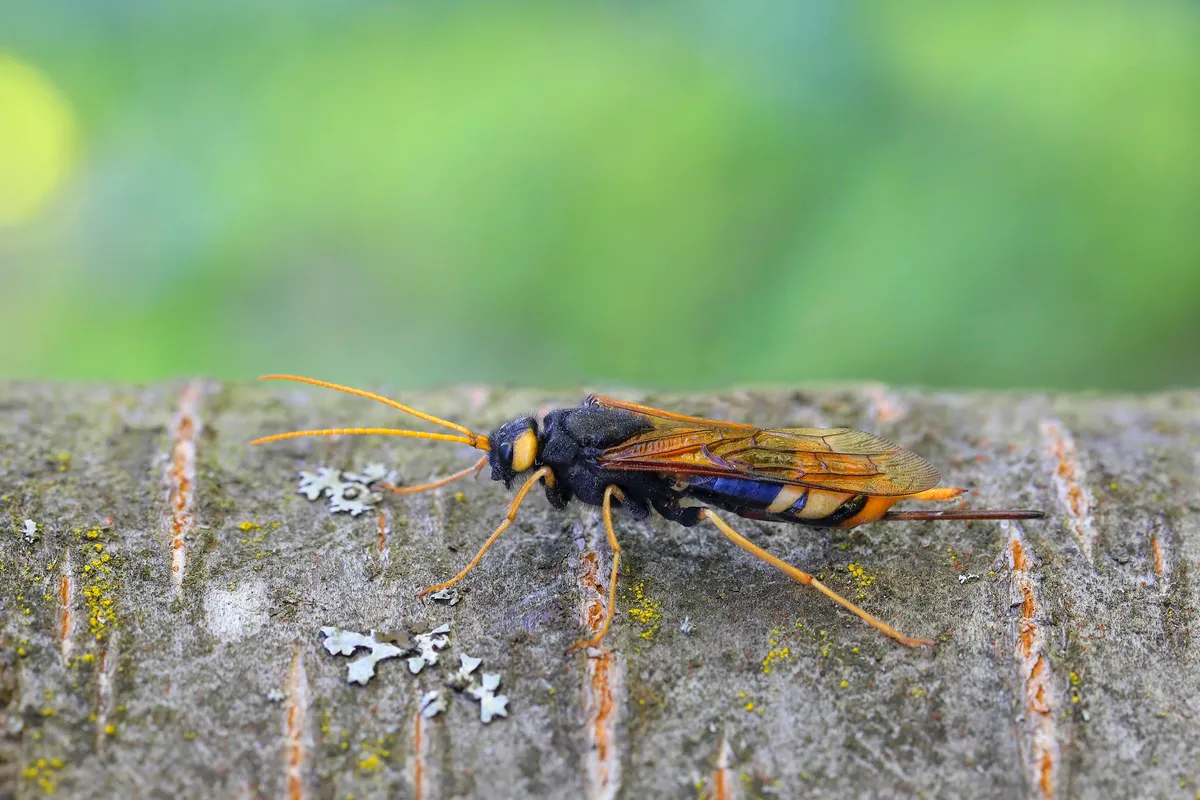What are Asian hornets
Asian hornets (Vespa velutina), also known as yellow-legged hornets, are a species of a wasp, which are a type of insect.
What do Asian hornets look like?
The most striking feature of the Asian hornet is the yellow ends to the legs. This is very distinctive in comparison to the European hornet but the form of the Asian hornet seen in Europe is also generally much darker than the native European hornet (Vespa crabro).
The head of the European hornet is yellow from above while the Asian hornet is dark from above.
It is tricky for many people to be sure of the particular species that they are seeing though and so that is why we invite everyone to send sightings of concern to be checked.
What do Asian hornets eat?

Asian hornets are predators of other insects, particularly honeybees.
Are Asian hornets the same as Asian giant hornet?

Although very similarly named, the Asian hornet (Vespa velutina) is a different species to the Asian giant hornet (Vespa mandarinia), also know as the northern giant hornet and nicknamed by the US media and researchers as the ‘murder hornet’. The Asian giant hornet is the largest hornet in the world, and like Asian hornets, it also feeds on honeybees.
Some honeybees have adapted to defend themselves from Asian giant hornets via thermoballing, which is when they surround the hornet and vibrate their muscles. This heats the hornet to 45C, which is fatal for the hornet.
Where do Asian hornets come from and how were they introduced to Europe?
Asian hornets are native to Southeast Asia, including China, northern India, Thailand, Malaysia, Vietnam and Laos.
The Asian hornet first arrived in France in 2004 and was detected in 2005. It was introduced in some imported pottery by mistake.
It spread rapidly through France and into a number of neighbouring countries including Spain, Portugal, Belgium, Italy, the Netherlands and Germany. It also reached the Channel Islands and is considered established there, and is quite widespread in Jersey.
Are there any Asian hornets in the UK?
The first record in the UK was in 2016 and there have been occasional sightings every year since. There have been several thousands of potential sightings submitted each year, but so far only a few have been confirmed as Asian hornets and in all cases the nests have been destroyed. The Asian hornet is currently absent in the UK. The government keeps an update of confirmed sightings, of both single hornets and nests.
A paper published in 2017 simulated how Asian hornets could rapidly spread across the UK from a single active nest, if no action was taken.
Are there any similar UK species?
There are a number of species that are confused with the Asian hornet. The European hornet is most commonly mistaken for an Asian hornet in the reports received through Asian Hornet Watch and the wider alert system.
The hornet mimic hoverfly (Volucella zonaria) and the giant woodwasp (Urocerus gigas) are also common reportedly as possible Asian hornets.
What happens following a UK sighting of an Asian hornet?
Every sighting of concern reported through the Invasive Non-Native Species Alert system is checked by a network of experts coordinated by the UK Centre for Ecology & Hydrology and including the Bees Wasps and Ants Recording Society.
The few confirmed Asian hornet records are relayed rapidly to the National Bee Unit and the Animal and Plant Health Agency who locate and destroy any active nests. It is important that people remain vigilant and continue to share any sightings of concern.
How should people report potential sightings of the Asian hornet?
Everyone can help by reporting any sightings of concern through the Asian Hornet Watch app or online.
It is extremely useful if people can submit a photograph, but only if it is safe to take one.
Find out more about UK bees and wasps:
Main image: An Asian hornet. © Nicolas Reusens/Getty



